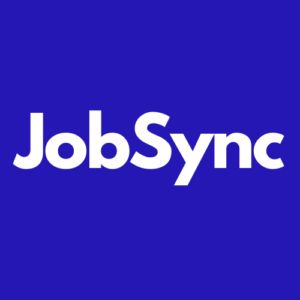
Hiring for empathy, with empathy, while still remaining operationally efficient is tough for any talent function to master. Bill Musman, VP of Talent Acquisition at AmeriHealth Caritas, shares his ideas for recruiting passionately while steering a mission-driven organization at full speed.
AmeriHealth Caritas, a managed care organization of six million members, provides health coverage to vulnerable and underserved populations in the United States. Its mission is to help its members get care, stay well, and build healthy communities. Beyond these health-focused objectives, AmeriHealth’s larger mission is to help end poverty, so everyone can reach their American Dream.
Since you are who you hire, its talent function is a key enabler in achieving this goal. Last year, AmeriHealth Caritas hired 4,000 people across a wide range of roles, from clinical staff to administrative and support positions.
We caught up with the warm and inspiring Vice President of Talent Acquisition and Resource Management, Bill Musman, to chat about hiring for mission fit, how to scale up a red carpet candidate experience, and the tricky art of aligning a mission-driven recruiting strategy with the realities of the business.
You very intentionally use the word mission-driven and not purpose-driven, which is a word we often hear in the market. How do you frame mission-driven within AmeriHealth Caritas
Within the first minute of me sitting down and talking to our CEO during my interview, he said, ‘Bill, here’s our mission. Everything we do is driven to help eradicate poverty, and it starts with our members.’ For 45 minutes, the essence of our conversation was really driving what we can do from a talent perspective to support that noble goal.
Once I got here and started talking to our executive leaders and my recruiting team, every single one of them brought the mission to the conversation. This is the first time in my career where I’m part of an organization where it isn’t about revenue and profit margins. It’s about our members and how we can support the journey they’re on.
You’re 10 months into this TA role and have a lot of things to think about. Where do you start?
It starts with the Employee Value Proposition. As a mission-driven organization, the number one thing is our ability to tell our story—what is this company all about? Obviously, the mission got driven home when I was going through the interview process, but when I think about our external properties, whether it’s social media, our career website, our job descriptions, or how we interview the kinds of people that we want to select, it’s figuring out how we tell those stories and elevate them, so we can use that as an attraction mechanism for our candidates.
There is a certain kind of person who will lean into a mission like yours. How do you build that persona? How do you interview for those traits?
Almost 70% of the people that we hire are member-facing. So, they need to have some level of awareness of what’s going on. The most effective people are the ones that have experienced what our members are going through so that’s what we’re focused on right now—as we look at our roles, how do we engage folks that are going through what our members are going through so they can relate?
There are challenges with that, both in terms of accessing and attracting that talent, but then also assessing it. Because in a lot of cases, these candidates may not have the best resume or the best interviewing skills, but they know what our members might be going through. We’re working on revamping our job descriptions and making sure that our hiring managers are being unbiased when it comes to interviewing, and that we’re giving our candidates an opportunity to tell their stories.
I mean, you’re hiring for empathy. How do you weave that into the candidate experience?
For empathy, exactly. It’s not easy. We’re in the early stages of figuring out how we assess candidates, how we interview them, and how we measure them once they’re here. But techniques like behavioral interviews or simply having somebody tell you their stories, versus the traditional ‘how many years of experience do you have?’ are really important when you’re trying to attract and find that empathy trait.
How do you measure recruiting performance through the lens of empathy? Do recruiters have candidate experience KPIs around their role?
Sometimes as recruiters, we lose the connection to the candidate. It’s—’I just hired somebody and hopefully they’ll start.’ From an empathy standpoint, I want to make sure that our recruiters are building those good, strong, trusted relationships with their candidates. I expect the recruiters to be staying in touch with candidates the whole time as they go through the process.
Another part of the plan is making sure that we have hired the right people and tracking that—are they staying? Are they actively producing? Are they performing well? And also, how do we provide them with the skills they need to be able to grow, whether they’re moving vertically or latticing across our organization?
We’re always looking for stories about the individuals that we’re able to progress and who do a great job here. I really want my recruiters to be subject manager experts. A successful recruiter should know a great candidate when they see it, be able to get them into the organization, find them, assess them, close them, but then also make sure that those people are staying, getting promoted and moving throughout the organization. I’m trying to work through our objectives for recruiters and what that looks like.
What else do you do to activate your workforce to embody your mission?
One of our strategic business goals is that every single person, what we call a care crew, spends time outside the office doing community investment. You have to put in a certain amount of hours and you are given the time to go do that. Once a week, I’ll get a message from our community investment team with the volunteer opportunities that are available and you can sign up for. We have a program called Healthy Hoops and as a huge basketball fan, I love that! It’s a whole day with a bunch of kids doing drills and skills.
It’s not just about the time we give, either. We also have the opportunity to invest financially in charities we support, directly from our paychecks. We do so many great things, and we need to start shouting about them in our EVP.
What’s next on the TA journey?
We’ve averaged about 4,000 hires a year for the last couple of years. When you’re growing that fast, it’s just ‘get it done!’ Now things have slowed down a bit, it’s an opportunity for us to take that step back and start doing some purposeful workforce planning. We’re looking at the skills we need and where the gaps are, whether it’s succession planning, leadership development, or early careers programs, then making sure that we, as a talent acquisition organization, are proactively in the marketplace and cultivating the talent that we need to fill some of those gaps.
Another part of the journey is to improve our operational efficiency. We haven’t yet figured out how we operationalize our EVP, but the speed at which we hire, retention rates, productivity, the people who get promoted, are all going to become important metrics. The biggest thing that I’m working on is speed and velocity. TA is too slow. But once we start to build the EVP and the messaging and get the story out, that will help in looking at some of those metrics and figuring out the impact of those.
I feel like you’re navigating an interesting juxtaposition, where the high touch, high empathy approach needed to advance your mission and conventional recruiting metrics run counter to each other.
Welcome to my world! I came into this role thinking about all the traditional TA metrics and I’ve run into mission, members and focusing on their needs. On one hand, I want to make sure that we’ve operationalized, we have an efficient TA organization, and we’re seen as experts. But I’m also drawn towards our mission. What we do every single day impacts our members. I’m trying to be patient in managing those two areas, so that we’re delivering on our mission, but we also have a good efficient TA team and products and services that we can offer to our businesses.
Last year, we ranked in the top 40 of the CandE awards. I have no idea how, but we’re doing something right! We’re going to be identifying some of those key products, vendors and culturally what we do within our TA teams that contributed to that success, because it is a great measuring stick. I want to do better than we did last year because I think the tools we’ve put in place will help with that. We have to grind it out to become operationally efficient, but I’m very optimistic as we get to 2025, 2026, it’ll be much better.
Want more insights from Bill on how to blend a mission-driven recruitment strategy with your business goals effectively? Watch the full webinar here: How to Align A Mission-Driven Recruitment Strategy With Business Goals.


